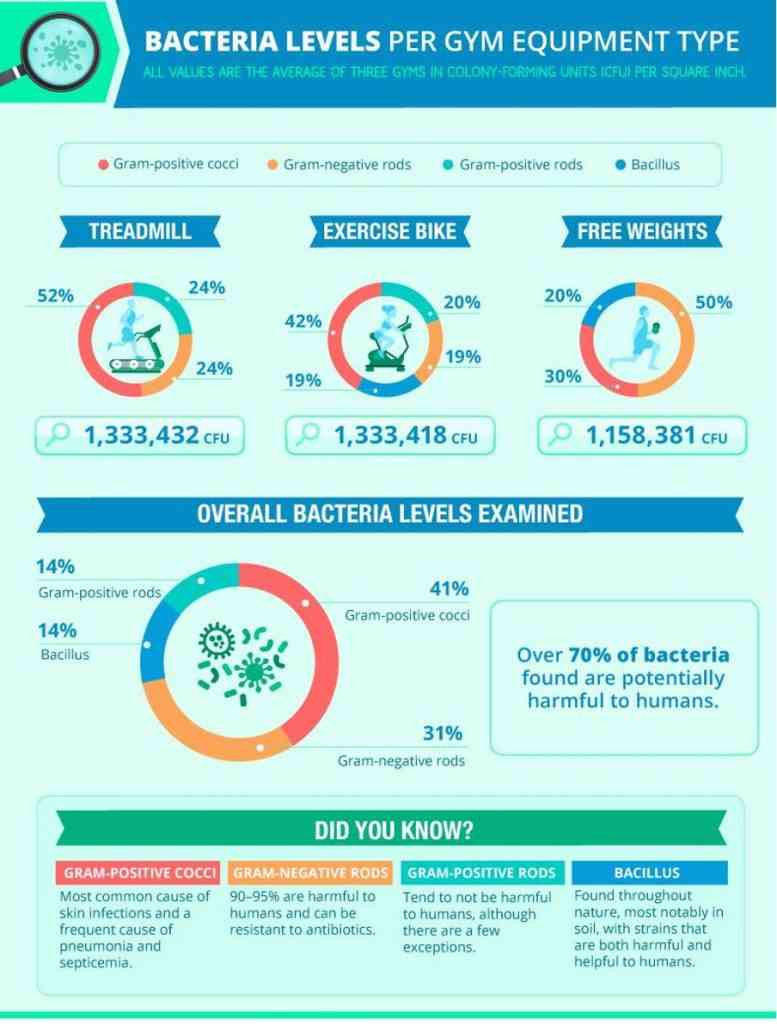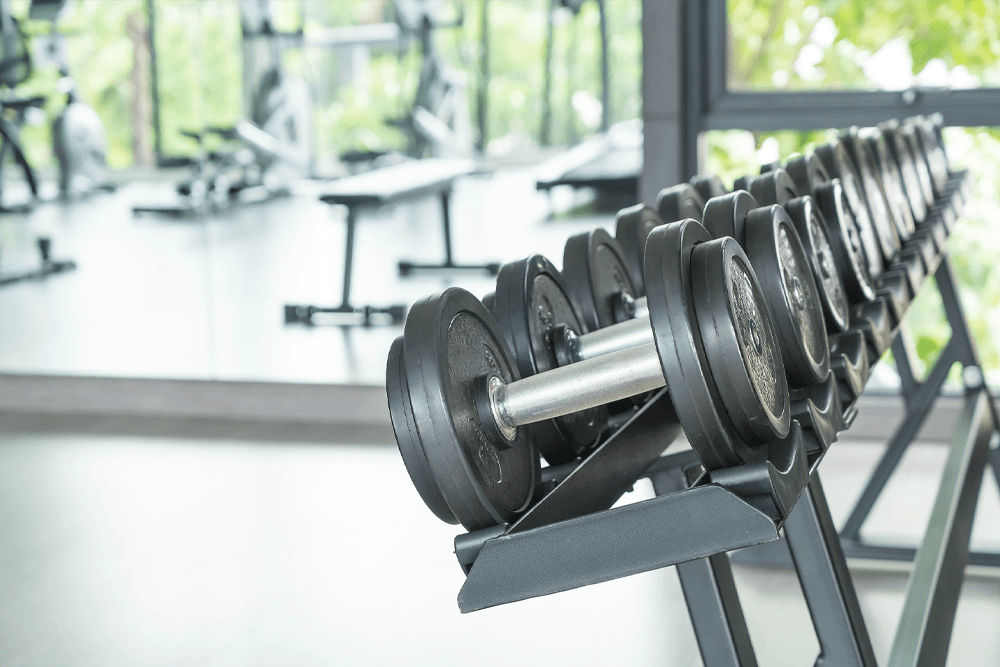TYPES OF BACTERIA AND GERMS FOUND IN FITNESS CENTERS
The use and popularity of fitness centers/gymnasiums has increased exponentially over the past few decades. Considering the decline of gym usage during the Covid-19 pandemic, gyms are still one of the most popular places for people to visit. It inculcates a sense of discipline and motivation amongst people to achieve their fitness goals, stay connected, and make new connections. Gyms are a good alternative to people living in urban areas where they do not have easy or ready access to open spaces such as parks or running trails where they can indulge in fitness exercises such as running, cycling, walking, etc. Gyms are a convenient one-place stop to get different types of exercises – Yoga, Pilates, Cardiological, Strength-training to name a few. However, these fitness centers and gymnasiums are also one of the most common places for transmission of bacterial/microbially-induced infections. Human perspiration due to exercising results in high levels of moisture content in these places facilitating growth of microbes in such environment. Respiratory disorders and skin infections are some of the most common health impacts associated with exposure to microbial contaminants prevalent in gyms. Depending on the structure of the gyms particularly regarding the availability of natural ventilation, humidity, and temperature control, building construction and materials, the indoor air quality of gyms can vary drastically. Occupancy and demographics of the gym members also play a role in air quality of the fitness center.
The most prominent source of bacteria found on the surface of the gym equipment is from the people using the equipment (Figure 1). Fungal sources are mainly from outdoors, soil, plants, and water bodies. This article provides an overview of the microbial contamination in public gyms. This article is part of new series by Saniservice titled “Indoor Air Quality” that provides an understanding of the microbes residing in the built environment or anthropogenic environments such as residential houses, office buildings, schools, etc., sources of microbes, impact of microbes on human health, and factors contributing to the growth of microbiomes in the built environment. Saniservice are one of the leading providers in excellent and sustainable indoor air quality treatment solutions for both residential and commercial clients.

BACTERIA IN GYM EQUIPMENT AND HEALTH IMPACTS
A study was conducted investigating the bacterial ecology of few fitness centers in Memphis, Tennessee, USA. Samples were collected from the surface of the gym equipment, floor mats, handrails, etc. Results showed that Firmicues phyla were the most abundantly found species, followed by Proteobacter and Actinobacteria (Figure 2). Most of these bacteria are from human and environmental origin namely air, water, soil, and dust (Figure 3).
Some other abundantly found bacteria found in surface of gym equipment were Staphylococcus, Pseudomonas, Pantoea, Micrococcus, Enterobacter, Klebsiella, and Bacillus (Figure 4). Staphylococcus causes Staph infections that are usually skin infections but if the bacteria invade deeper into the body, it can cause life-threatening issues. Some of these bacteria are found in the human urogenital and gastrointestinal tract, in food products such as cheese, meat, and vegetables, and in the environment. These are associated with causing Urinary Tract Infections particularly amongst women.
As discussed earlier, the survival of microorganisms and the microbial diversity in indoor environments depends on air circulation, indoor ventilation design, and relative humidity. The bacteria capable of transmission through aerosols such as, Pseudomonas and Klebsiella species can survive in high relative humidity and low temperatures, a condition that’s highly prevalent in gyms and fitness centers. This article summarized the different types of bacterial found in gyms and fitness centers based on a study conducted in Memphis. Although the bacteria found on the equipment are transmissible, the extent of risk associated with spread of disease cannot be estimated due to lack of substantial data. Regular cleaning and disinfection, proper personal hygiene, and good faith practices at fitness centers should be adopted to minimize bacterial growth.



REFERENCES
- Salonen, H., Salthammer, T., & Morawska, L. (2020). Human exposure to air contaminants in sports environments. Indoor Air, 30(6), 1109-1129.
- Mukherjee, N., Dowd, S. E., Wise, A., Kedia, S., Vohra, V., & Banerjee, P. (2014). Diversity of bacterial communities of fitness center surfaces in a US metropolitan area. International journal of environmental research and public health, 11(12), 12544-12561.
- Boonrattanakij, N., Yomchinda, S., Lin, F. J., Bellotindos, L. M., & Lu, M. C. (2021). Investigation and disinfection of bacteria and fungi in sports fitness center. Environmental Science and Pollution Research, 28(37), 52576-52586.
- //www.fitrated.com/resources/examining-gym-cleanliness/
Abhiram Satyadev



